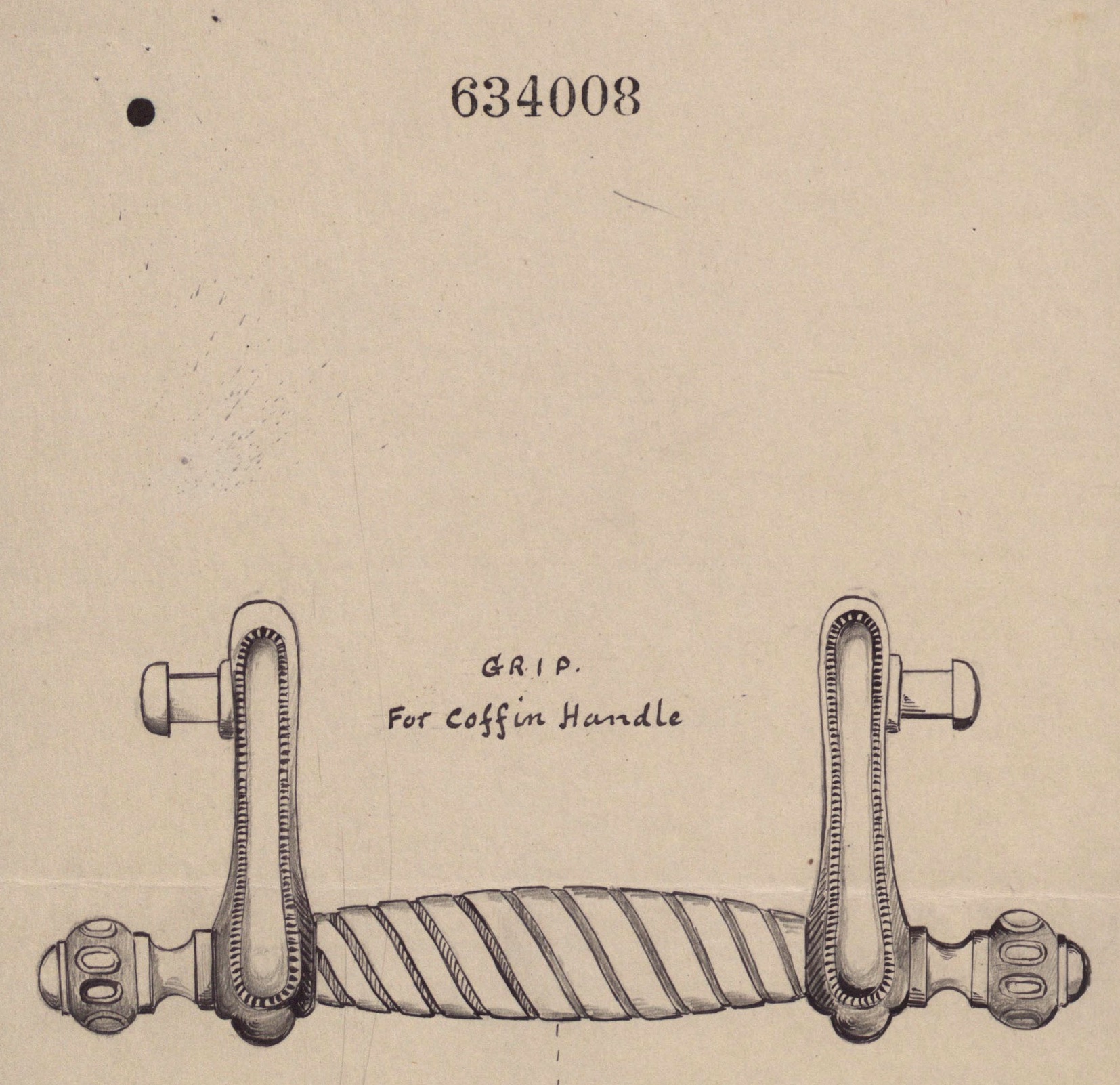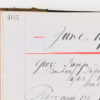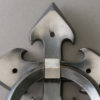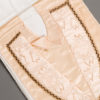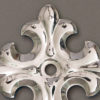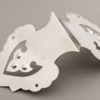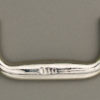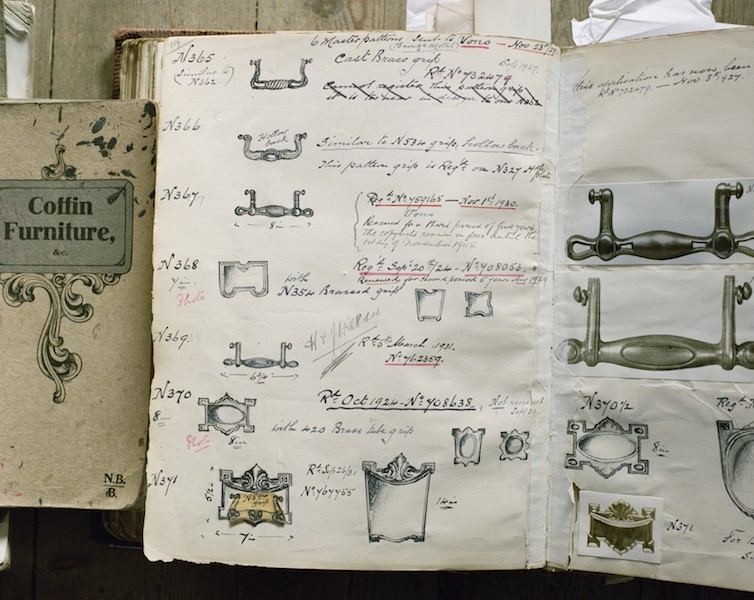
The image above illustrates a Newman Brothers’ Registered Design Book which was photographed by English Heritage in 1998 when the first official documentation of the collection began. Unfortunately, the book has since disappeared and we are not sure if this happened while in storage, or whether Joyce Green (owner of Newman Brothers) took the book with her. The book would have significantly helped our efforts in dating the collection, as it included the original draughtsman’s designs along with the ‘RD’ numbers, and their date of issue.
However, we’ve managed to find a few of those unique numbers on a select number of objects in the Newman Brothers’ collection. For example, the handle below was registered with the Board of Trade in 1914. That’s not to say that the actual coffin handle dates from 1914, as designs were kept in production over a significant period of time, especially if they proved popular. But, what this is allowing us to do is place the Newman Brothers’ catalogues, and therefore the products, within fixed date ranges.
For example, the image comparisons below shows the 1914 handle and its associated Registered Design number ‘634008’. The image comparison on the right-hand side illustrates the same image, which is actually the child’s version of the handle, alongside the original draughtsman’s drawing of the adult handle.
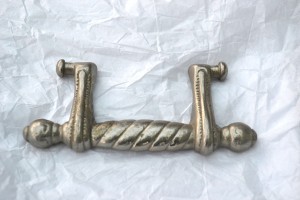
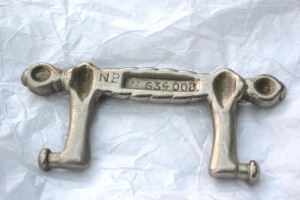

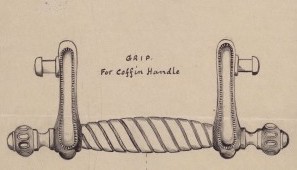
The handle below was first registered with the Board of Trade in July 1964, and this design also features in one of our trade catalogues, allowing us to confidently say that the catalogue in question was produced no earlier than 1964. This ties in perfectly with information from an ex-funeral director who worked in the trade in the 1960s, as he also dated the trade catalogue to around the 1960s.
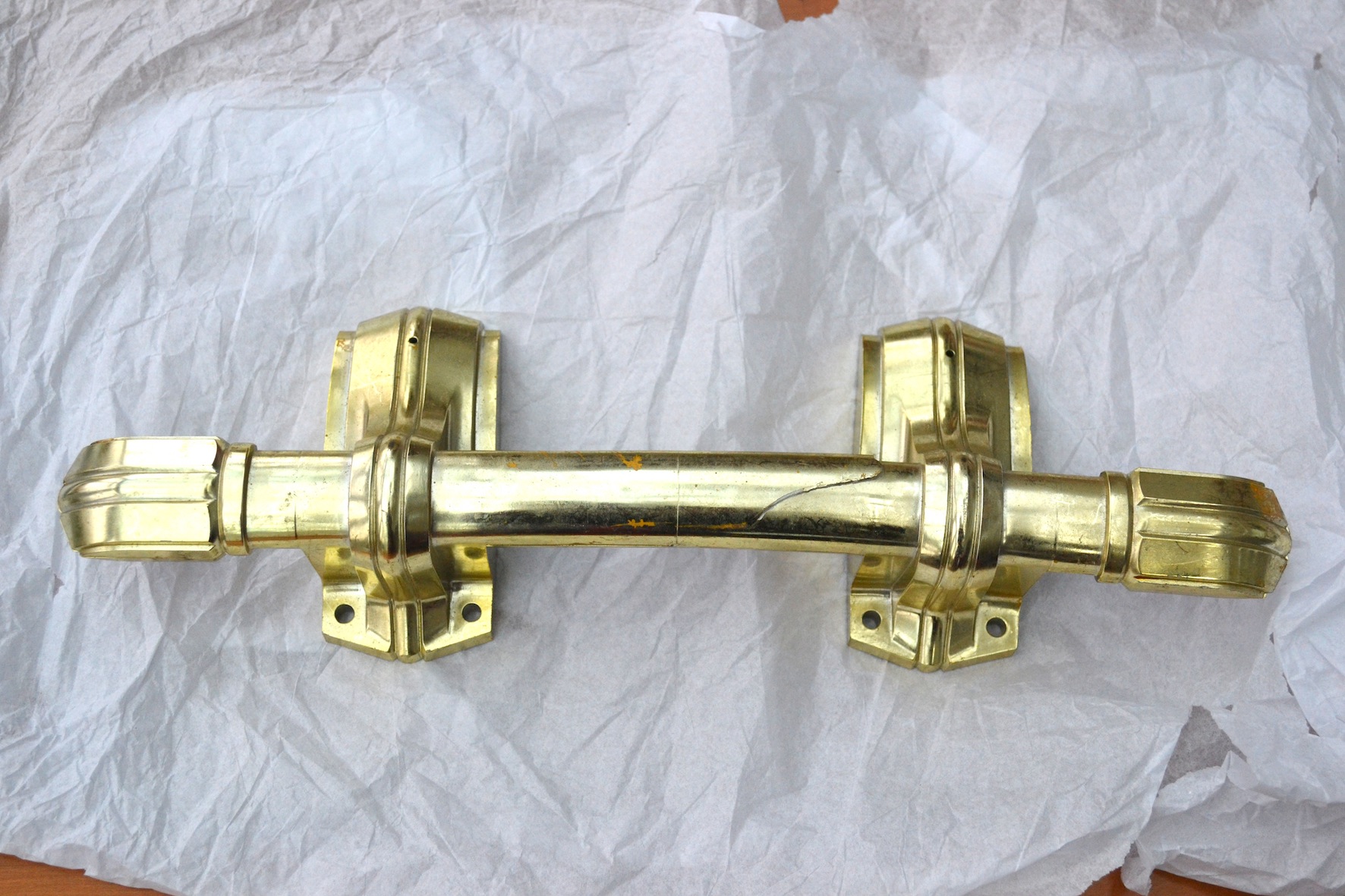
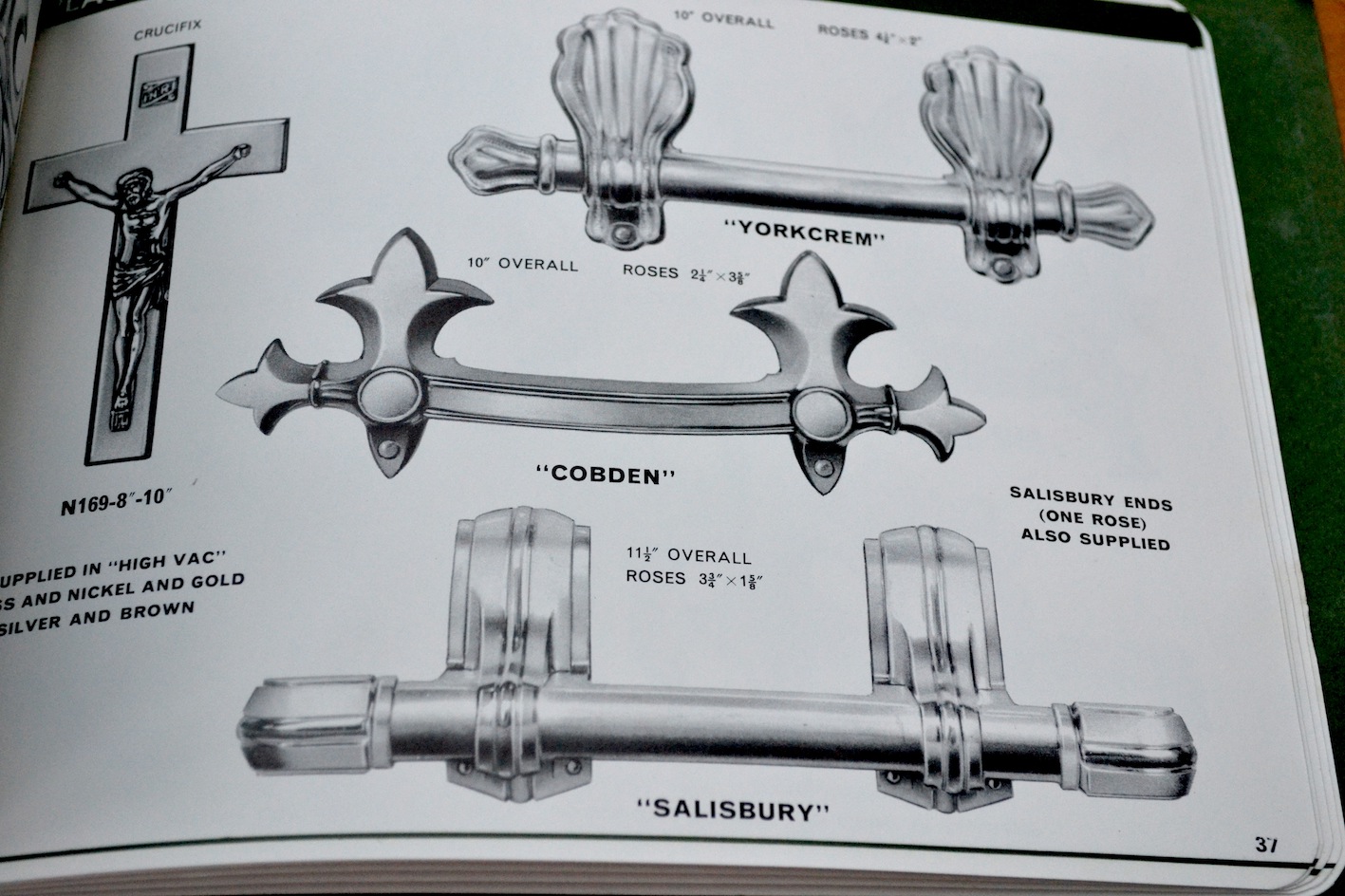
‘General’ and ‘Registered’ Coffin Furniture
There are two types of coffin furniture designs, ‘General’ or ‘Registered’. ‘General’ refers to common designs that stayed in fashion, and were made by all the manufacturers. ‘Registered’ designs, on the other hand, were exclusive to a particular manufacturer and copying was not allowed. The designs had to be registered with the Board of Trade. Indeed in 1958 Newman Brothers were taken to court by Charles Hill & Co. (CHILLCO) for infringement of a registered design (see below). The matter was settled out of court and Newman Brothers’ director, John Kellett maintained that they had taken inspiration from an Australian design very similar to the CHILLCO one they had been accused of copying.
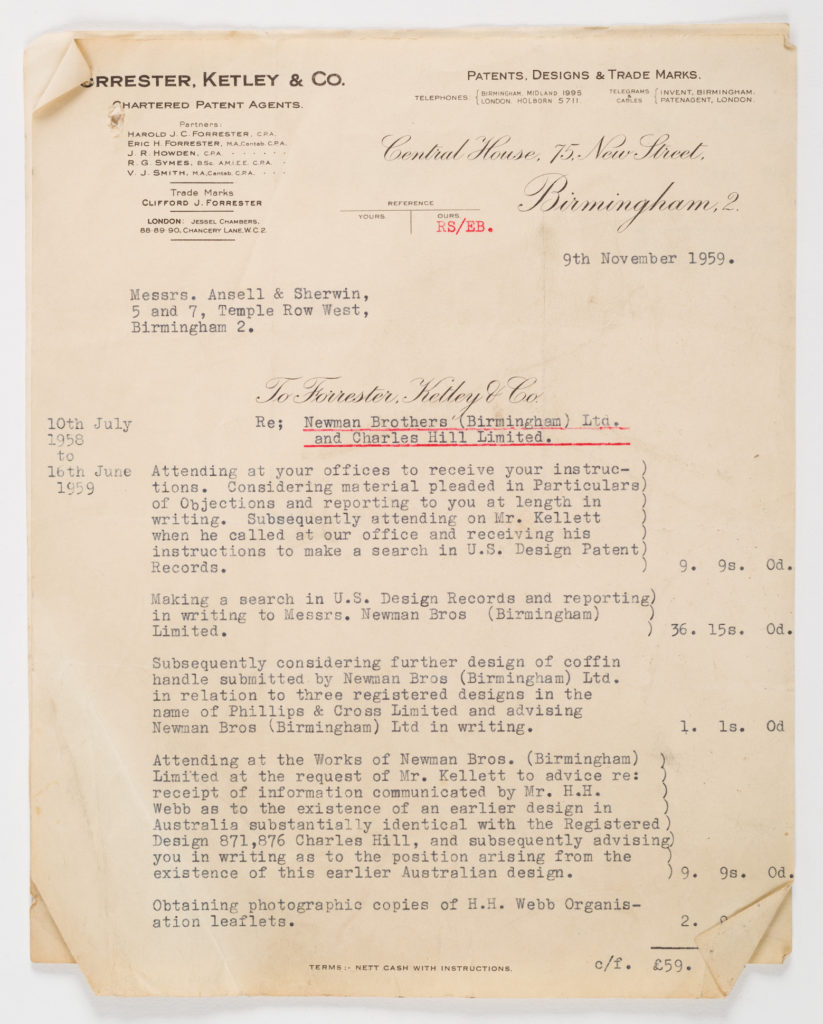
There are many Newman Brothers’ designs that don’t actually feature in the surviving catalogues, so it is plausible to suggest that we do not have the entire collection. Either that or perhaps Newman Brothers did not feature all of their Registered designs in their catalogues in order to keep prices down. Some of their most exquisite Art Deco handles for instance, do not feature in their surviving catalogues, but the Registered Design numbers illustrate that they are Newman Brothers’ products.
We unfortunately do not have any of Newman Brothers’ catalogues from when they were brass founders specialising in cabinet fittings. However, we are lucky enough to have found this design in the National Archive’s Board of Trade records, which is a back plate and handle designed for a cabinet, dating from 1884, just two years after the company began business in 1882.
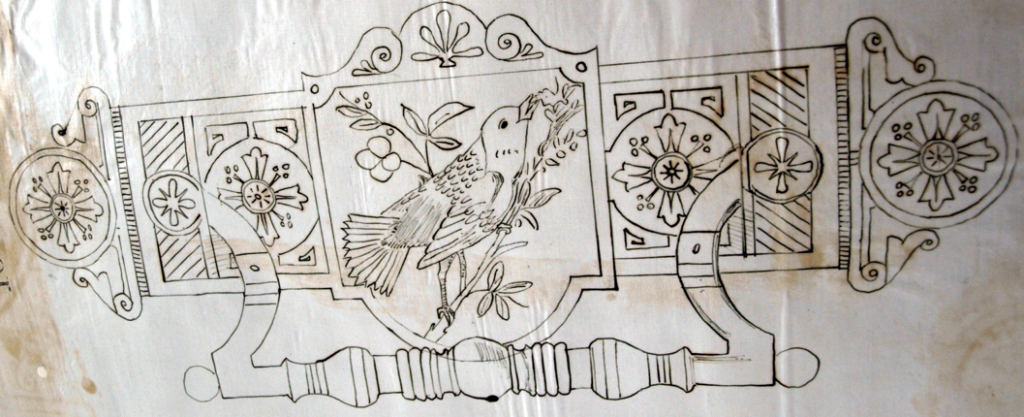
By the 1960s, Newman Brothers had significantly reduced their product range so that it contained just over 60 products, compared with over 200 at their height before the First World War. The most significant change is the introduction of plastic furniture. This ties in with the purchase of a second-hand vacuum coating machine, which applied the metallic finishes to the plastic handles.


